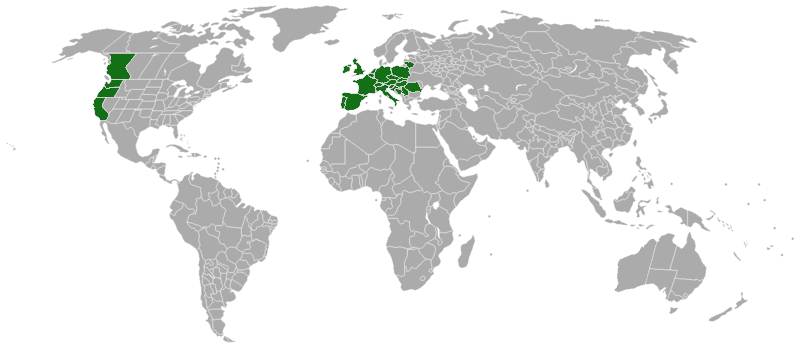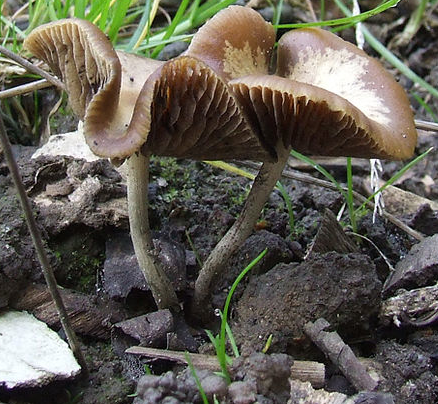Habitat

Wikimedia Commons, May2, 2007
Because
Psilocybe cyanescens is a fungus, it is safe to assume that we
would find it in locations that are moist, warm, and contain organic
material that can be decomposed. Although this would encompass the
majority of the world, there is a definitive process for this
heterotrophic organism to consume organic material.
Therefore, where must we look to find where this mushroom
grows naturally?
Psilocybe cyanescens is found for the most part in the
temperate regions of North America and across the span of Europe.
The mushroom is most prevalent in the western part of California,
because the climate is best suited for their germination. However,
in recent years the population of
P Cyanescens has spread
across the United States, in particular to regions that have
undergone expansive development. As machines bring in materials,
often mulch, woodchips, and other organic substrates there is a
trace of mycelium that develops fruiting bodies, in turn producing a
harvest of potent psychedelic mushrooms in public places.
Although its wavy cap can distinguish
P. cyanescens, it is often confused as a different species of
psychedelic mushroom in the genus
Psilocybe, most likely
because of the similar size, structure, and cap color that the
hallucinogenic mushrooms are known for. It is important to remember
to always remember to never eat one of these mushrooms in the wild,
because of the inadvertent psychoactive component that most likely
would not be expected.
 The P. cyanescens
mushroom does not grow tall in its natural habitat, therefore it has
become a fierce competitor for resources. Once fruiting occurs, the
growth of the mushroom is unprecedented, and attracts two main
predators in its natural environment. Most animals will avoid the
mushrooms, however humans cannot resist picking mushrooms,
especially ones containing illegal psychedelic compounds. The other
organism that will seek out psychedelic mushrooms is reindeer,
believe it or not. Reindeer will pick colonies of mushrooms
containing hallucinogenic properties and burry the mushroom fruiting
body for later use.
The P. cyanescens
mushroom does not grow tall in its natural habitat, therefore it has
become a fierce competitor for resources. Once fruiting occurs, the
growth of the mushroom is unprecedented, and attracts two main
predators in its natural environment. Most animals will avoid the
mushrooms, however humans cannot resist picking mushrooms,
especially ones containing illegal psychedelic compounds. The other
organism that will seek out psychedelic mushrooms is reindeer,
believe it or not. Reindeer will pick colonies of mushrooms
containing hallucinogenic properties and burry the mushroom fruiting
body for later use.
Wikimedia Commons, February 21, 2009
If you are ever in California or Europe in the late fall and
want to go on a scavenger hunt through some unexplored terrain,
there isn't a more fun activity than hunting for mushrooms. Make
sure to check out the
life
cycle page on my website in order to see the amazing
adaptations that this fungus has undergone, as well as
the
interactions it has with its external environment.
You can also go back and look at the
classification of the
fungus if you desire. All of
this information will help you to make sure you know exactly when
and where to properly look to locate the fruiting bodies of
P. cyanescens.
